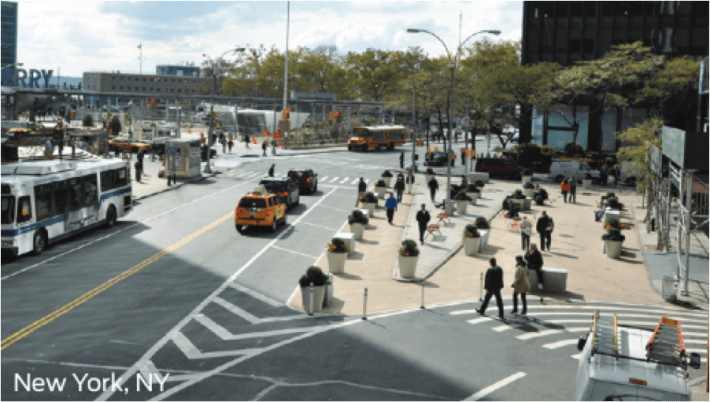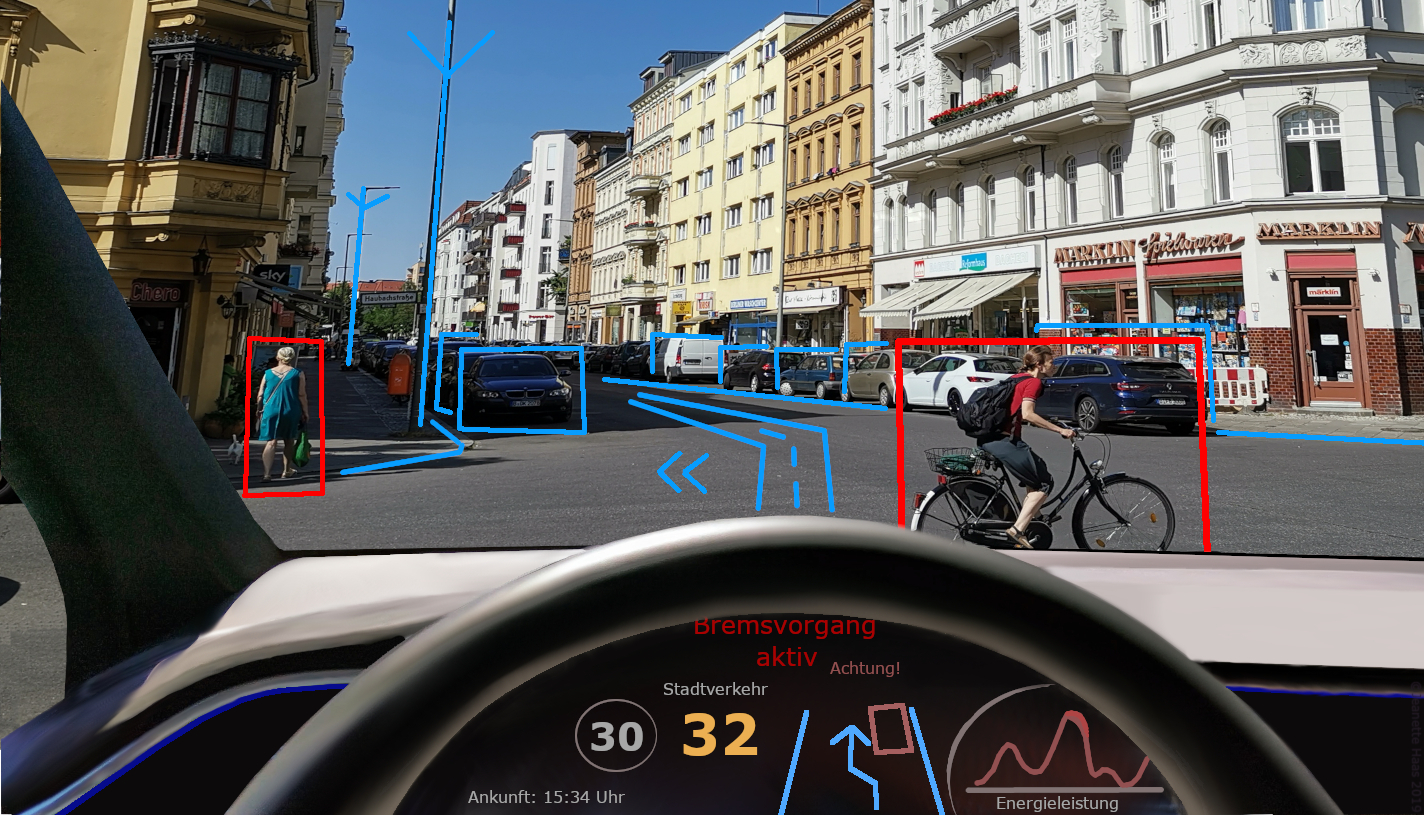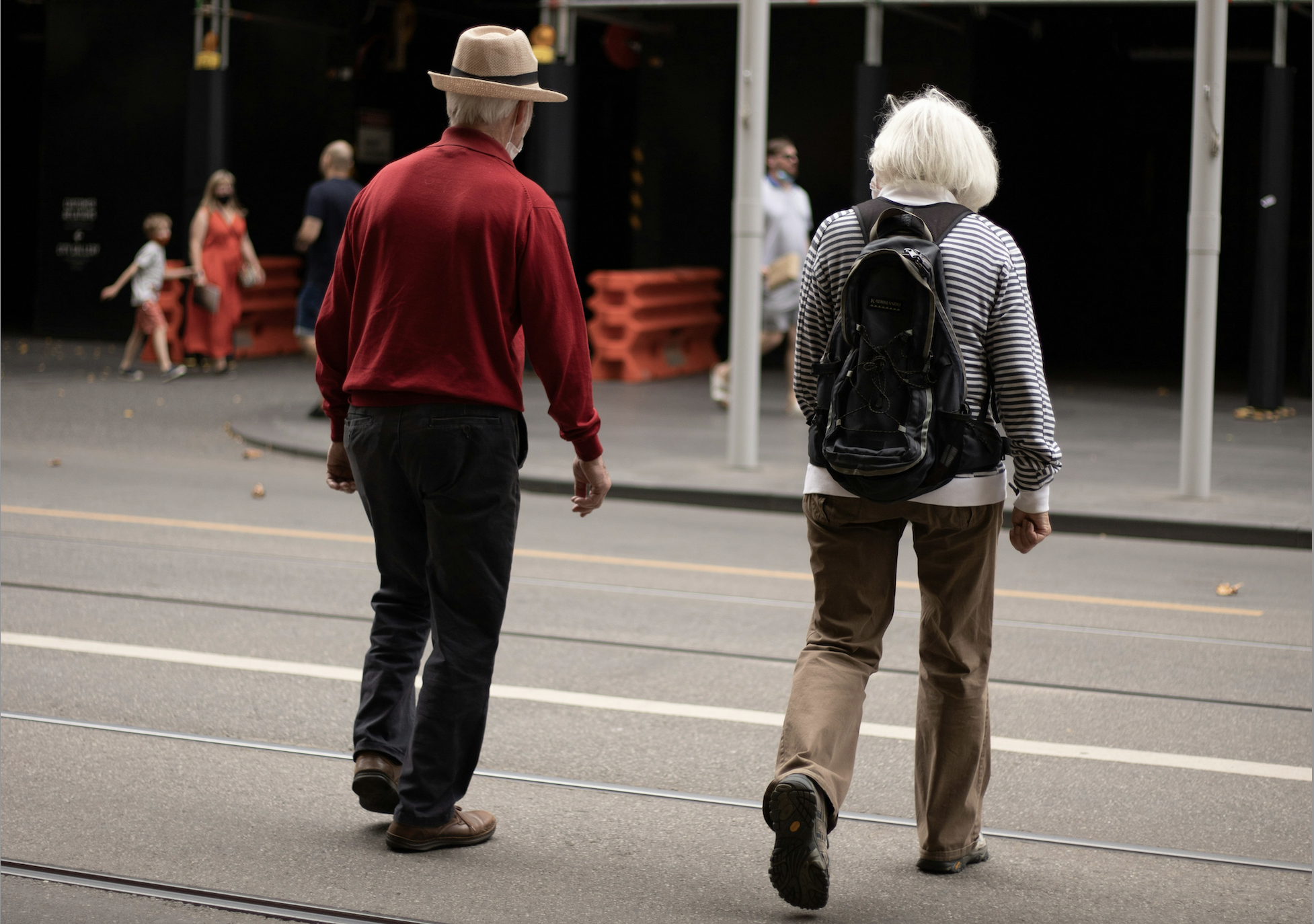
In a direct challenge to the long-standing authority of state DOTs to determine how transportation infrastructure gets designed, the National Association of City Transportation Officials (NACTO) yesterday launched its Urban Street Design Guide.
NACTO’s Urban Bikeway Design Guide has already empowered cities around the country to embrace protected bike lanes and other innovative designs that the American Association of State Highway and Transportation Officials has shied away from in its engineering bible, known as the "green book." The Federal Highway Administration has even endorsed NACTO’s guide, and the agency is currently drafting its own bicycle facilities guidance, which will likely fall somewhere in between.
The Street Design Guide goes much further, giving engineering guidance on everything from crosswalks (zebra-striped, please, for greater visibility) to parklets (go ahead, usurp a few parking spots!) and from contra-flow bus lanes (bicycles optional) to slow zones (speed humps, tables, and cushions). As NYC DOT Commissioner and NACTO President Janette Sadik-Khan said, it’s a new DNA for city streets.
Those are treatments you won't find in AASHTO's green book. “Most of the design guidance that we work with on the city side is really targeted toward suburban areas and rural areas and is not really designed to meet the challenges of our streets,” Sadik-Khan told a standing-room-only crowd last night at the Newseum in Washington, DC. “So many things have changed in 50 years, but our streets haven’t, and our design guidance certainly hasn’t.”
The NACTO guides are a “kind of permission slip for people to innovate,” Sadik-Khan said -- even when the old standard-bearers fret that the new designs are untested. “If we had waited to go through the traditional process of AASHTO committee cycles, we’d be having this discussion in 2050.”
NACTO lists six guiding principles for street design:
Streets Are Public Spaces. They’re fundamental to public life, not just a corridor for transporting oneself from point A to point B.
Great Streets Are Great for Businesses. Streets that encourage foot and bicycle traffic result in greater retail profits and higher home values.
Streets Can Be Changed. Many city streets were designed 50 or 60 years ago, in an entirely different context with a different set of values and assumptions. Engineers can make big changes even while working “within the building envelope” of a street.
Design for Safety. More than 34,000 people were killed in traffic crashes last year in the United States. Streets need to do a better job of ensuring the safety of people in cars, on foot, on bikes, window-shopping, playing hopscotch -- you get the idea.
Streets Are Ecosystems. Sustainable design elements like pervious pavements and shade trees help the built environment interact in a healthier way with the natural environment.
Act Now! This may be the greatest contribution that NACTO and its president have made to design. You don’t have to wait for proposals to be approved and study commissions to review the concept. By using low-cost and removable materials, cities can test out new designs, helping people visualize changes and determine whether or not to make them permanent.
Michael Kimmelman, architecture critic of the New York Times, said Sadik-Khan has been “very tactical and successful in providing people with things they then realize they want.” But before people experienced it, who would ever think to ban cars from Broadway or replace underutilized parking lots with parks? “You can show what something can be by painting it, and if it doesn’t work you can take it back,” Sadik-Khan said. “You can put it back. And I think that lowers the anxiety people feel about change. They’ll try it; if they like it great. If not, it’s paint.”
“That’s gone a long way to increase the buy-in for these different kinds of approaches,” she went on. “And then people can see it and touch it and feel it. It’s not a planning study, it’s not a computer model -- and people like it.”
After testing out a design with paint and planters, cities can redo it with concrete and steel. Sadik-Khan has done this in New York, notably starting the Times Square pedestrian makeover with little more than lawn chairs before committing to a permanent redesign that tore up the asphalt.
When HUD Secretary Shaun Donovan spoke -- approvingly -- of NACTO’s “guerrilla tactics,” Sadik-Khan corrected him. They’re not guerrilla tactics, they’re design standards.





